Honegger and Saint-Saëns
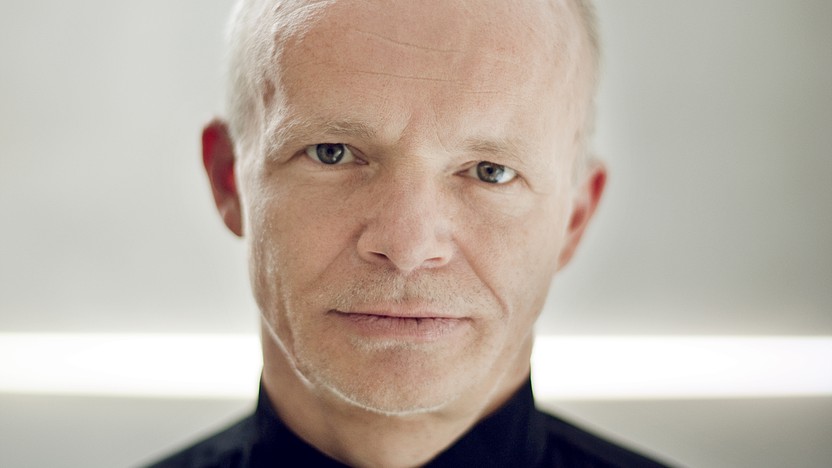
Sponsored By
- May 17, 2013

- May 19, 2013


Sponsored By


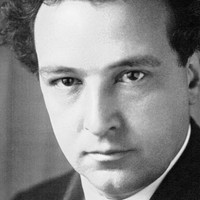 Watch Video
Watch Video
In 1920, an influential article hailed a group of young French composers as “Les Six,” placing them in the same revered class as the “Russian Five” from a previous generation, Mussorgsky and Rimsky-Korsakov among them. Honegger was less of a trickster than his five Satie-influenced peers, which included Darius Milhaud and Francis Poulenc, and his sincerity came through in Pastorale d’été (Summer Pastoral) from that same breakout year. In the score, an epigraph by the influential French poet Arthur Rimbaud sets the mood for this short tone poem: “J’ai embrasse l’aube d’ete.” (“I have embraced the summer dawn.”) The opening passage and other long stretches maintain a static harmony built on the mixolydian mode, defined by its lowered seventh tone compared to a major scale. This prolonged vamp is undeniably bluesy, conveying the same languid calm that would mark the cool jazz of later decades.
Aaron Grad ©2019
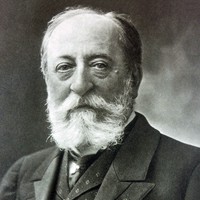
Nineteenth-century French composers had a difficult time getting their symphonies performed in their own country, where the symphonic repertory was dominated by Austro-German music, particularly that of Beethoven. Indeed, when Saint-Saëns turned to the eminent French conductor Jules Pasdeloup for advice, he was told: “Write masterpieces like Beethoven’s and I’ll play them.” No small challenge and not especially helpful! On the other hand, when Saint-Saëns presented the score of his First Symphony to Narcisse Girard, director of the Orchestre de la Société des Concerts du Conservatoire, Girard criticized its orchestration, saying that trombones didn’t belong in symphonies. Saint-Saëns reminded him that Beethoven had used the trombone in his Fifth, Sixth, and Ninth Symphonies, to which Girard responded, “Yes, but it would have been better if he had not.” Despite any reservations that he may have had, Pasdeloup conducted the premiere of the Second Symphony at a concert of the Société des jeunes artistes du Conservatoire on March 5, 1860, and Saint-Saëns rewarded him with the dedication of the score, which was not published until 1878.
Saint-Saëns was twenty-four years old in 1859, when he completed his Second Symphony, and while one can detect in it echoes of Beethoven and Schumann, there is much that is unusual and original. It is laid out along classical lines, in four movements. The first movement opens with an introduction marked Allegro marcato. Two powerful beckoning chords introduce the symphony’s motto: a chain of falling thirds that will generate themes in this and in subsequent movements, thus imparting a cyclic unity to the symphony as a whole. When first presented, this series of thirds is tonally ambiguous and somewhat unsettling as it moves repeatedly down and up. With the arrival of the Allegro appassionato the motto becomes the subject of a fugue, a highly unusual strategy for a symphony. According to Saint-Saëns this “scandalized some listeners.” The Adagio second movement is a gentle reverie, its delicate sonorities enhanced by muted strings. The impetuous Scherzo that follows changes course in the middle as if for the conventional contrasting Trio section, but in a break with tradition, the scherzo does not then return. Both sections present themes built out of the initial motto. The lively, whirling Finale has been compared to the saltarello that concludes Mendelssohn’s “Italian” Symphony, but the two works move in opposite tonal directions: Mendelssohn from A major to A minor and Saint-Saëns from A minor to A major. Again, the motto makes prominent appearances, but as the movement draws to a close, several stuttering attempts to restart the main theme, very much in the manner of Haydn, yield to a gorgeous and ethereal recollection of a passage from the end of the Adagio. Only then is the dance-like main theme able to resume. Momentum is recovered, and the symphony comes to a boisterous close.
David Grayson ©2013
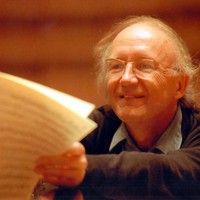
The Three Sketches originated in a request by the violinist Thomas Zehetmair for an encore piece to follow the performances of the Mozart Sinfonia concertante, K. 364, that he planned to give with his wife and duo partner, the violist Ruth Killius, in celebration of the 250th anniversary of Mozart’s birth. The resulting triptych is more a companion piece than an encore, and in these performances it is performed before, rather than after the Mozart work. To give more brilliance to the viola part in his Sinfonia concertante, Mozart specified that all four strings should be tuned in scordatura, a half step higher than usual. (“Scordatura” is the Italian word for “mistuning.”) Holliger adopted the same viola scordatura for his Three Sketches as the viola would need to be “mistuned” for the Mozart. He completed the set in September 2006, and the duo gave the first performance on June 22, 2007, at the Aldeburgh Festival in England. The score is dedicated to “Ruth and Thomas.”
In his preface to the score, Holliger commented that he “was fascinated by the unforeseen possibilities of two instruments with different tuning and [I] sketched out three totally different pieces.” He described the first, Pirouettes harmoniques, as “a quasi-ballet of weightless, graceful dancers—but depicted exclusively by natural harmonics.” Quarter tones add to the atmospherics.
In the second sketch, Danse dense, the instruments are muted. It is “an incredibly fast perpetuum mobile: closely interlocking, irregularly articulated rhythmic patterns are superimposed or follow one another to form a wild and extremely intense dance.”
The third, Cantique à six voix, is “a calm piece in the style of organum, which is literally a final song: the performers each play a two-voice instrumental part and sing an extra part, producing six-part harmony,” with the wordless vocal parts blending completely with the instrumental sonorities. The range of the vocal parts is based on the gender of the dedicatees—a male violinist and a female violist—although the score allows for other distributions by permitting the players to transpose up or down an octave any notes that lie outside their range or, in the case of a male violist, to sing falsetto.
On his publisher’s website, Holliger offers the following epigram: “My entire relation to music is such that I always try to go to the limits.”
David Grayson ©2013
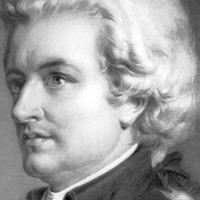
Wolfgang Amadeus Mozart, the onetime child prodigy who had dazzled audiences all over Europe, found himself in an unexpected predicament in his early twenties: he was stuck in his hometown of Salzburg. He resigned from the court of the local Archbishop in 1777 and set out with his mother in search of new employment, but his visits to Mannheim and Paris failed to produce any real prospects. At least he came away from his time in Mannheim, home to one of the world’s finest orchestras, with a new arsenal of brilliant ensemble effects.
Mozart returned to Salzburg in 1779 and begrudgingly resumed working for the Archbishop. On the side, he cultivated his own private circle of musicians and patrons, for whom he wrote symphonies, concertos, serenades, and other entertaining diversions. We don’t know exactly the circumstances that led to Mozart composing the Sinfonia concertante for violin and viola in 1779, but we can presume that it was some social event in Salzburg. Mozart, a fine violinist and violist, would surely have played one of the solo parts.
The idea of a concerto for multiple soloists had been around for nearly a century (in the form of the concerto grosso), but the sinfonia concertante was a trendy new approach flourishing in places like London, Mannheim, and Paris — where Mozart actually wrote his first example for a quartet of soloists. In the Sinfonia concertante for violin and viola, Mozart addressed the natural imbalance in projection by calling for the viola to be tuned a half-step higher than normal, increasing the alto instrument’s power. (Modern instruments and metal strings have alleviated this need, so today’s soloists often forgo the transposition.)
One of the sounds Mozart picked up in Mannheim was a long crescendo that gathers strength over a constant bass note, a device so characteristic of the local composers that it was dubbed the “Mannheim roller.” A terrific example is the final climax of the tutti exposition that precedes the arrival of the soloists.
The central Adagio movement unwinds its haunting main theme in skeins of long, singing phrases that weave between the two solo instruments. As in the first movement, the two soloists share a fully composed cadenza, imparting a chamber-music intimacy to this orchestral score. The finale continues the impressive display of ensemble colors, including prominent passages for the horns and oboes, all in support of quick-witted banter between the soloists.
Aaron Grad ©2024
*These events have limited availability. Click here to be added to a waiting list. *
Get driving directions and find nearby parking.
Find dining options close to the venue.
View seating charts to find out where you'll be seating.
Get driving directions and find nearby parking.
Find dining options close to the venue.
View seating charts to find out where you'll be seating.
